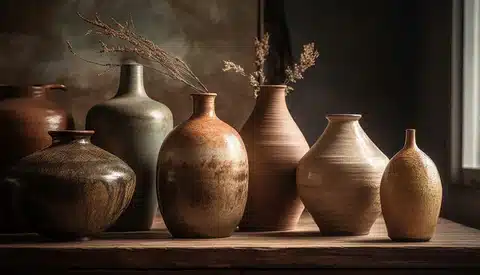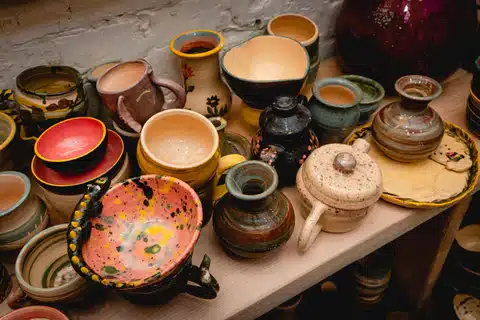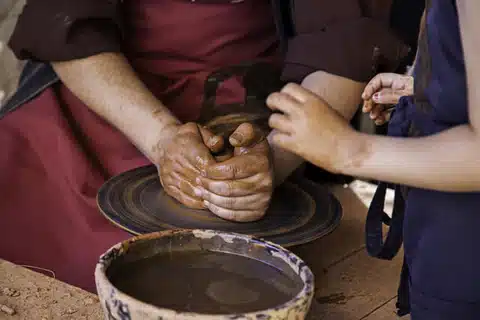What is Salt Glazing and How to Do it?
Salt glazing is a centuries-old technique used to refine and beautify the art of pottery. This technique is continually evolving to present potters with an unpredictable method to create a unique and modern craft.
If you are a budding potter and looking to learn everything about salt glazing, read this article to the end.
What is Salt Glazing?
Salt glazing is an age-old technique that began in Germany between the 13th and 14th centuries. This technique was used by potters in the Rhineland region of Germany to create shiny clay pots and ceramic crafts.
Rhineland at that time was packed with clay quarries and had various docks that transported clay goods all around Europe. The potters in the region invented the salt glazing technique to give that glass-like shine to their pots. It is said that salt glazing was invented due to the kilns in the region that were packed with salty wood. When salt-soaked wood reacted with the clay material in the kilns, it created a glazed effect on the pots.
Clay contains silica, and when silica reacts with salt, it produces sodium silicate which is a glass-like compound. Sodium silicate gives salt-glazed pots a bright orange color and that glassy, smooth appearance we all love.
Although this technique was discovered accidentally by German potters, many pottery artists around the world have now realized the unique benefits of using salt during the firing process.
What is Soda Glazing?
Soda glazing was discovered much later than salt glazing, but the technique for both methods is quite the same. Similar to the salt glazing process, soda glazing is done by firing soda into the kiln at an optimum temperature to give the clay a smooth, glass-like texture.
Despite being similar in mechanisms, both techniques have different properties. Soda is considered less hazardous, and this is the reason soda glazing is used more widely.
How Salt and Soda Firing are Done
The salt glazing process starts by adding a pre-decided amount of salt into a wood-fired kiln. The salt is added into the kiln when the silica starts to reach its melting point, which can be around 1300C. Before starting the salt glazing process, all the pots and clay materials inside the kiln must be bisque fired.
For the perfect glazed effect, you will need to add salt slowly at a precise angle, so it gets time to vaporize before reaching the bottom. One thing you can do to achieve the perfect glaze is dilute sodium carbonate in water and spray it into the firebox.
The look and texture of the clayware you have in mind decide how much salt you will be using. If you want the typical orange peel on your pots, you will need to add at least 1 pound of salt per cubic meter of your kiln volume.
When you add the salt into the kiln, it starts reacting with silica and creates vapors and sodium silicate that runs down on the pots. You can use a different kiln for doing salt glazing as this process can leave vapor build-up which can hinder other firing processes. Moreover, salt reacting with the sulfur can also leave residue on the shelves which can contaminate the kiln. Therefore, make sure to properly clean the kiln before the next firing process.
Salt and soda glazing have a straightforward, but dangerous process. Wear protective gloves, goggles, face shields, and safety shoes to avoid any accidents.
Why Potters Prefer Salt Glazing
Salt glazing is an interesting technique that gives unpredictable and unique results. Potters have been using this method of beautifying cremains for centuries, and they are continuously evolving it to match their creativity.
Salt glazing pieces turn out very smooth, shiny, and artistic. This technique really affects the spots, creases, and underglazes that you have created in your pots and gives them a different look. The results after the firing process are varied and unique.
Salt glazing creates layers of texture on your ceramics, and potters just love that shiny brilliance.
Conclusion
Pottery is an art that demands perfection and techniques like salt and soda glazing make your craft perfect. Salt glazing is a useful technique that has been around for ages and enables potters to create shiny, and beautiful ceramic ware. Salt and soda glazing are both similar methods used to give a glazed effect to ceramic pots, but soda glazing is considered less hazardous.







